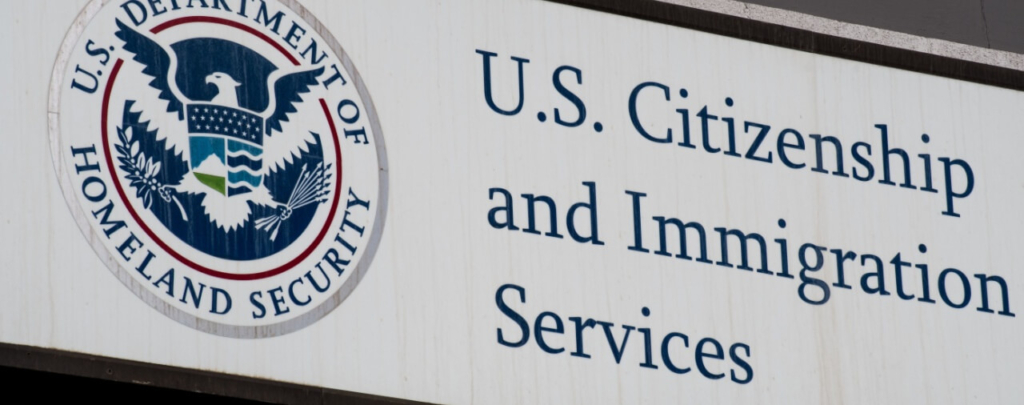In September 2017, the Department of Homeland Security (DHS) released an interesting fact sheet on its Citizenship and Assimilation Grant Program [PDF version]. The Fact Sheet “provides information on the characteristics of and resulting outcomes for individuals who received citizenship preparation services during fiscal year 2014…” In this post, we will briefly examine some of the interesting points from the Fact Sheet.
Under the Citizenship and Assimilation Grant Program (CAGP), the DHS explains that its United States Citizenship and Immigration Services (USCIS) “provided citizenship preparation services … to over 138,000 Lawful Permanent Residents (LPRs) in the District of Columbia and 35 states across the United States” during the period of fiscal years 2009-2015. The Fact Sheet includes statistics on those who received services in fiscal year 2014, which amounts to 17,465 individuals. You may see the most recently updated USCIS page on the program (September 28, 2017) here: [PDF version].
Statistics About Participants
The CAGP Fact Sheet provided the following statistics about program statistics during the sample period:
Over two-thirds were 25 to 54 years of age;
The average age was 45;
60.2 percent of participants were female;
64.2 percent of participants were married;
20.3 percent of participants were unemployed;
15.5 percent of participants were homemakers;
14.8 percent of participants who were employed were in construction occupations; and
14.3 percent of participants who were employed were in service occupations.
The top five countries for CAGP participants were as follows (percentages represent percent of total CAGP participants):
1. Mexico (21.3 percent);
2. Iraq (8.6 percent);
3. Dominican Republic (6.7 percent);
4. El Salvador (4.0 percent); and
5. Colombia (3.7 percent).
33.7 percent of the CAGP participants were admitted to the United States as immediate relatives, while 19.4 percent were admitted under the family-sponsored preference categories. 27.7 percent of participants were admitted as refugees or asylees.
On average, CAGP participants spent 10.5 years in LPR status prior to becoming U.S. citizens.
What CAGP Provided
CAGP allowed participants to access citizenship instruction services and naturalization instruction services, depending on need. 55 percent of participants used only the naturalization application services and 28 percent used only the citizenship instruction services. 17 percent of CAGP participants used both services.
In limited cases, a naturalization applicant may qualify for an exception to the English proficiency or civics portions of the naturalization test, or both. The CAGP Fact Sheet reports that about 1 in 7 participants were exempted from one or both tests, with 74 percent of those receiving the exemption from the English proficiency portion of the naturalization test.
Outcomes
The CAGP Fact Sheet provided the following statistics on outcomes for CAGP participants during the sample period:
About 80 percent of CAGP participants submitted the Form N-400, Application for Naturalization, during the study period;
About 91 percent of CAGP participants took the naturalization test (including those who were exempted from one or both portions of the test);
84 percent of CAGP participants who took the naturalization test took it only once, while 16 percent of the applicants who took the naturalization test took it more than once;
92 percent of CAGP participants who took the naturalization test passed (97.8 percent for participants aged 18-24 and 84.3 percent for participants 65 and over);
67 percent of fiscal year 2014 CAGP participants became naturalized citizens within the study period;
93 percent of all CAGP participants who took the naturalization test were successfully naturalized.
As of September 30, 2016, the naturalization test pass rate for all applicants who took the test since October 1, 2009, was 91 percent, making it comparable to the results achieved for CAGP participants [PDF version].
Conclusion
The USCIS’s detained Citizenship and Assimilation Grant Program participants provide an interesting window into the program. Those seeking naturalization in the United States are well advised, where possible, to consult with an experienced immigration attorney for case-specific guidance throughout the entire process. An attorney will be able to assist his or her clients in finding resources to prepare for naturalization, such as the exam. We provide detailed information about the rules and requirements for naturalization in our website’s full section on the subject [see category]. Furthermore, we provide a comprehensive overview of the current edition of the Form N-400 in a full article [see article].





